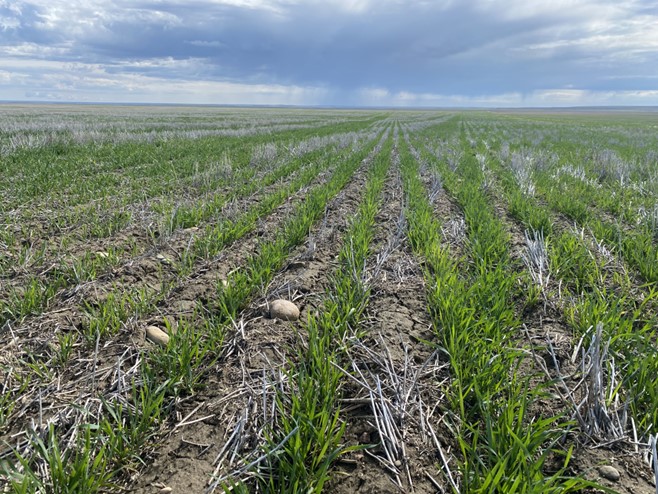The May USDA Crop Production and World Agricultural Supply and Demand Estimates (WASDE) reports surprised with lower-than-expected all-wheat production and ending stocks, sending KC wheat skyward. In both corn and soybeans, lower old-crop demand and lofty new-crop production estimates sent those markets in the other direction.
With the trade expecting the all-wheat production to come out at 1.782 billion bushels (bb), and up 132 million bushels (mb) from last year, the net result was a much lower 1.659 bb — little change from the previous year and no doubt fueled by greater drought and freeze damage on the hard red winter crop than many had expected. The net effect was a fall in ending stocks by 11% to the lowest level in 16 years at just 556 mb. The trade had expected ending stocks in the U.S. to be little changed.
Some other minor tweaks on the 2023-24 balance sheet included 10 mb lower imports and a 15 mb reduction in seed use, but a 15 mb higher feed and residua, and a decline in exports of 50 mb to just 725 mb.
Winter wheat production was pegged at 1.13 bb and up 2% from last year, but that was 88 mb higher than what the Dow Jones estimate predicted. Hard winter wheat was pegged at 514 mb and down 3%, while soft red winter, at 406 mb figured 21% higher on favorable weather and white wheat fell 11% to 210 mb. The seasonal average price for wheat dropped 85 cents per bushel to $8.00.
On the world front, there were several changes to 2023-24 anticipated production, and world ending stocks of wheat fell modestly from 266.3 mmt to 264.3 mmt (9.71 bb). Some of the notable projections are Argentina’s crop moving up to 19.5 mmt (716 mb) from 12.55 last year, Australia dropped to 29 mmt (1.06 bb) from the record 39 mmt last year, and Canadian wheat production rising to a record 37 mmt (1.36 bb) from 33.8 mmt despite concerns over a worsening drought in the Prairies. Both Russian and Ukraine wheat production is expected to fall by 10.5 mmt (386 mb) and 4.4 mmt (161 mb) from a year ago, while China and India are estimated to have crops that are 2 mmt and 6 mmt higher than last year.
July Kansas City wheat prior to the report was up 13 cents but soared at one point to move nearly 58 cents higher before finishing with a still very strong gain of 35 1/2 cents.
While the wheat losses appear to be real, as the extreme drought hurt the hard winter crop, the projections for both corn and soybeans for 2023-24 are merely educated guesses at this time. The markets are likely to return to weather and demand in the coming weeks.
Winter wheat production in Montana, based on conditions as of May 1, 2023, is forecast at 77.00 million bushels, according to the May 1 NASS survey. This forecast is 30 percent above last year’s production of 59.40 million bushels, and 44 percent above the 53.63-million-bushel crop produced two years ago.
Harvested area, forecast at 1.75 million acres, is 50,000 acres below last year. Average yield is forecast at 44.0 bushels per acre, up 11.0 bushels per acre from last year’s yield.
As of May 7, Montana’s winter wheat crop condition was rated 1 percent very poor, 1 percent poor, 44 percent fair, 49 percent good and 5 percent excellent, compared with 21 percent very poor, 18 percent poor, 48 percent fair, 12 percent good, and 1 percent excellent last year.
###
DTN/NASS
Photo: MT Grain Growers


